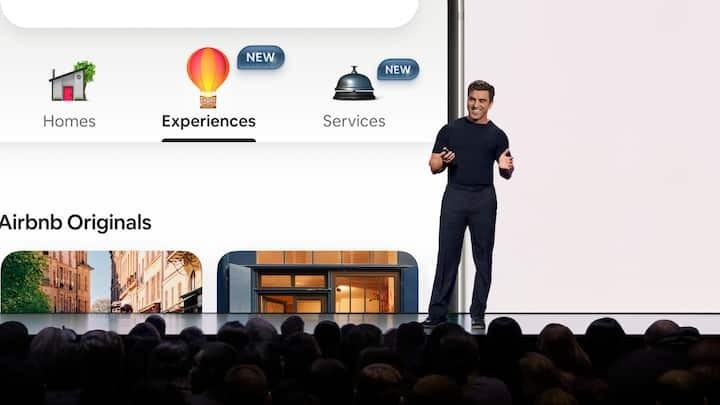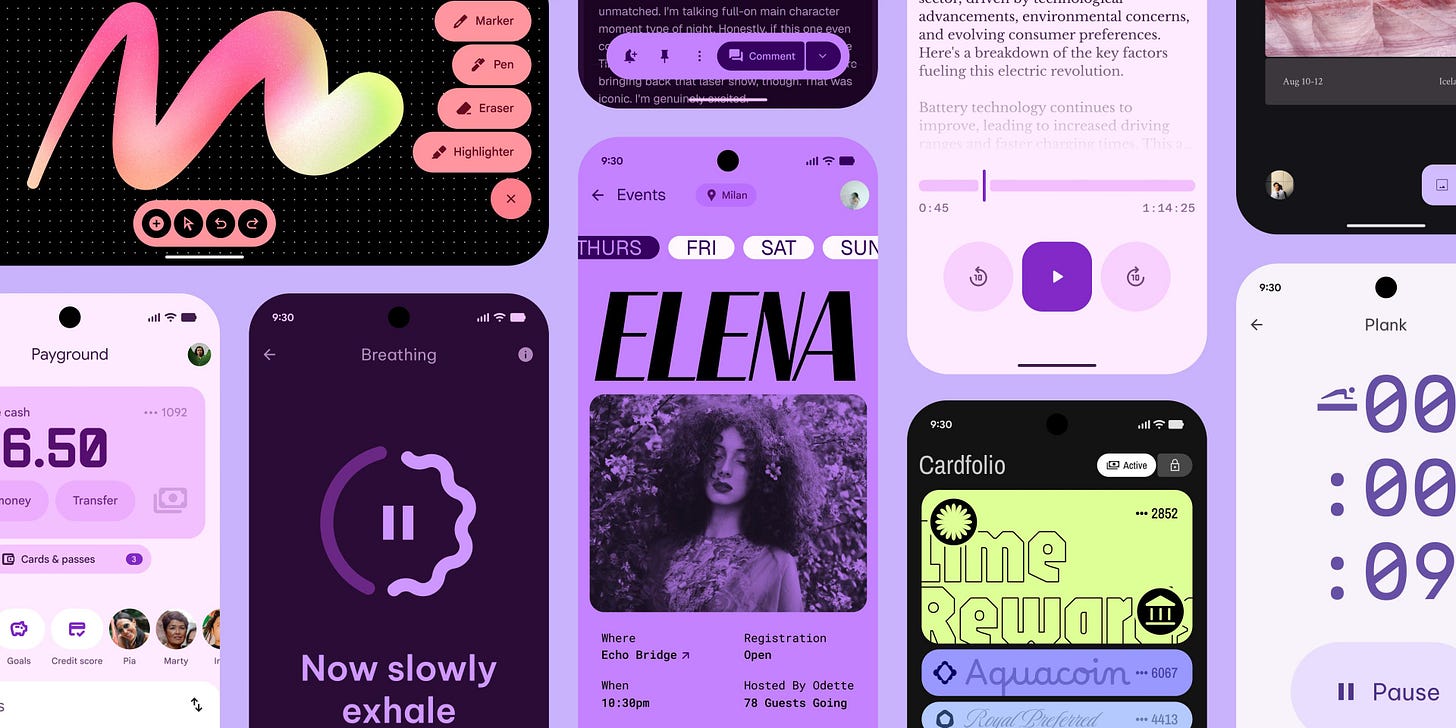May has been hot. Lots of new updates in design, AI and tech.
Have you been keeping up?
Figma Config 2025
Let's start with Figma Config, announcing its move to a full creative suite. The deal with Adobe was cancelled, and now are they going to be the next Adobe?
Figma isn't dead, but with more products in the family, will they continuously commit to improving the core prototyping tool? Imagine you were the only kid, then you got brother and sister (FigJam and Slides) and now your mom just gave birth to triplets (Buzz, Site, and Draw)—just wondering how much care the first kid will get? Fair enough, the eldest got a shiny new toy: Figma Make, which is a next-level prototyping tool.
My concern: After pricing went up just 6 months ago, should we expect prices to keep increasing?
Other prototyping tools are on the radar. Penpot is the open-source darling. Paper is generating serious buzz as the tool rethinking what it means to be a designer in an AI world, with a fresh vision for the future of design tooling. And there's always Sketch exclusively for Mac, if you want to go back to your ex (love their AI statement, though).
Airbnb Summer Release 2025
Airbnb’s Summer/Winter Releases have become something designers eagerly anticipate. I woke up to a feed suddenly flooded with news, praise, and cynicism. This year, they unveiled a full redesign, introducing new but familiar features like Experiences, now including Services. But what really has designers talking is the comeback of skeuomorphism.
Will we see a full skeuomorphic comeback, with buttons that look like glass and elements you can drag and pinch? Or is this simply a remix of flat design, enhanced with 3D illustrations? Uber has been doing 3D graphics and sleek transitions for a while now, and we could probably name other products too. So why are designers specifically celebrating Airbnb here? Are we celebrating the craft itself, or design as conviction?
"Flat design is over," said Airbnb CEO Brian Chesky in 2023, and doubled down in 2025: "The future is colorful and dimensional." A former designer himself, Chesky’s stance wasn’t surprising. When he spoke at Figma Config in 2023, the design community exploded with excitement to hear a tech leader champion design in a world obsessed with metrics over soul. Of course, those focused on dashboards and conversion rates raised eyebrows. In an era of efficiency and profitability chasing, designers constantly hear they need to "learn business" to earn influence and "get a seat at the table", that polishing UI won’t move the needle. But at Airbnb, business fluency isn’t expected upfront. It grows through curiosity, shaped by team sharing and reflections on impact.
“We want to build products with soul, but we still need to build products that sell. Can we have both? Should we have to choose?”
Google Material Design 3 Expressive
Design across products has been flat, white, and eerily familiar. You could screenshot ten different apps and barely tell them apart. It’s minimalism on autopilot. Consistent, yes. But inspiring? Not really.
Material 3 Expressive feels like it’s asking: can emotion be the antidote?
What makes this direction more compelling is who it’s coming from. Google helped popularize flat design, they systemized it, scaled it, shipped it to billions. Now they’re pivoting. Not by throwing out usability, but by admitting something most designers already felt: clarity isn’t the same as connection.
And what followed wasn’t guesswork. It was a rigorous, three-year research journey. 46 studies. 18,000 participants. Eye-tracking, usability, sentiment — all of it to answer a simple but layered question: can we make people feel something and still make it work?
Turns out, yes. Expressive design helped users find key actions faster. It made products feel more modern, more desirable, even more rebellious. (Yes, Google said “rebellious.”)
But here's the nuance that sticks with me: it's not expressive all the way, all the time.
Even Google’s research flagged this: context still matters. A media app? Dial it up. A banking interface? Maybe tone it down. And even though older adults performed just as well with expressive designs, I still wonder if the loudness might quietly alienate some. Emotion, when overused, becomes noise.
As human, we don’t express everything all the time. Some days we’re vivid and alive, other days muted and minimal. As an introvert, I feel this even more, around people I trust, I open up; in other moments, I stay quiet. And maybe design needs to reflect that too. A spectrum, not a statement.
Still, it’s refreshing to see a company that once led the charge for uniformity now choosing to ask deeper questions. Not “how do we scale this faster?” but “how should it feel?”
Sam & Jony introduce io
It’s funny. A few weeks ago, I asked my English CEO what it actually means to be called “Sir.” I was talking about Jony Ive, since he’s been knighted. Then suddenly, he popped up, speaking at a Stripe conference. Then a week later, making headlines with Sam Altman, announcing a $6.5 billion acquisition by OpenAI.
No product. No prototype. Just a message: AI can be more than just code running on traditional hardware, and hardware can be more than just screens. The video was visionary, nostalgic, and optimistic. The message? They are building something that could reshape how we live, work, and connect.
Not a launch. A vibe.
The promise? A new family of AI-native hardware products that move beyond today’s legacy devices. Sam Altman says the prototype is “the coolest piece of technology the world has ever seen.” A bold claim, especially without a single product shown.
But maybe that’s the point. The $6.5B acquisition feels less like a bet on hardware and more like a bet on belief… belief that design can lead again, that storytelling matters, and that people will follow you into the unknown if the narrative feels right.
The speculation: they’re targeting a world beyond the smartphone. Something screen-less, intelligent, pocket-sized, contextually aware devices that understand the world around you. Humane and Rabbit R1 already tried. Jony called them “bad products.”
So now we wait. And wonder: will this be another overhyped AI gadget, or the beginning of a real interface shift?
And some other things on my radar this month.
Yep, mostly AI.
Hope you've been enjoying this month.
If you find these recaps useful, let me know.
One thing I’ve been thinking about as I pick up on the signals and look toward 2025 and beyond, the industry is only going to grow broader:
HCI → HAI (Human-Agent Interaction)
HA2AI (Human-Agent-to-Agent Interaction)
AIxD (AI Interaction Design)
AI UX
Zero UI, Invisible Interface
Product Design isn’t dead. It’s EVOLVING.
UI isn’t dead either—how else would you be buying clothes or ordering food online? 😃
Print design is still here after more than a century. Websites are still here after 30 years. Every medium has its purpose and its charm.
Soon, the market will rebound. Things will get better. The path will become clearer.
Until next time,
Thomas
—










